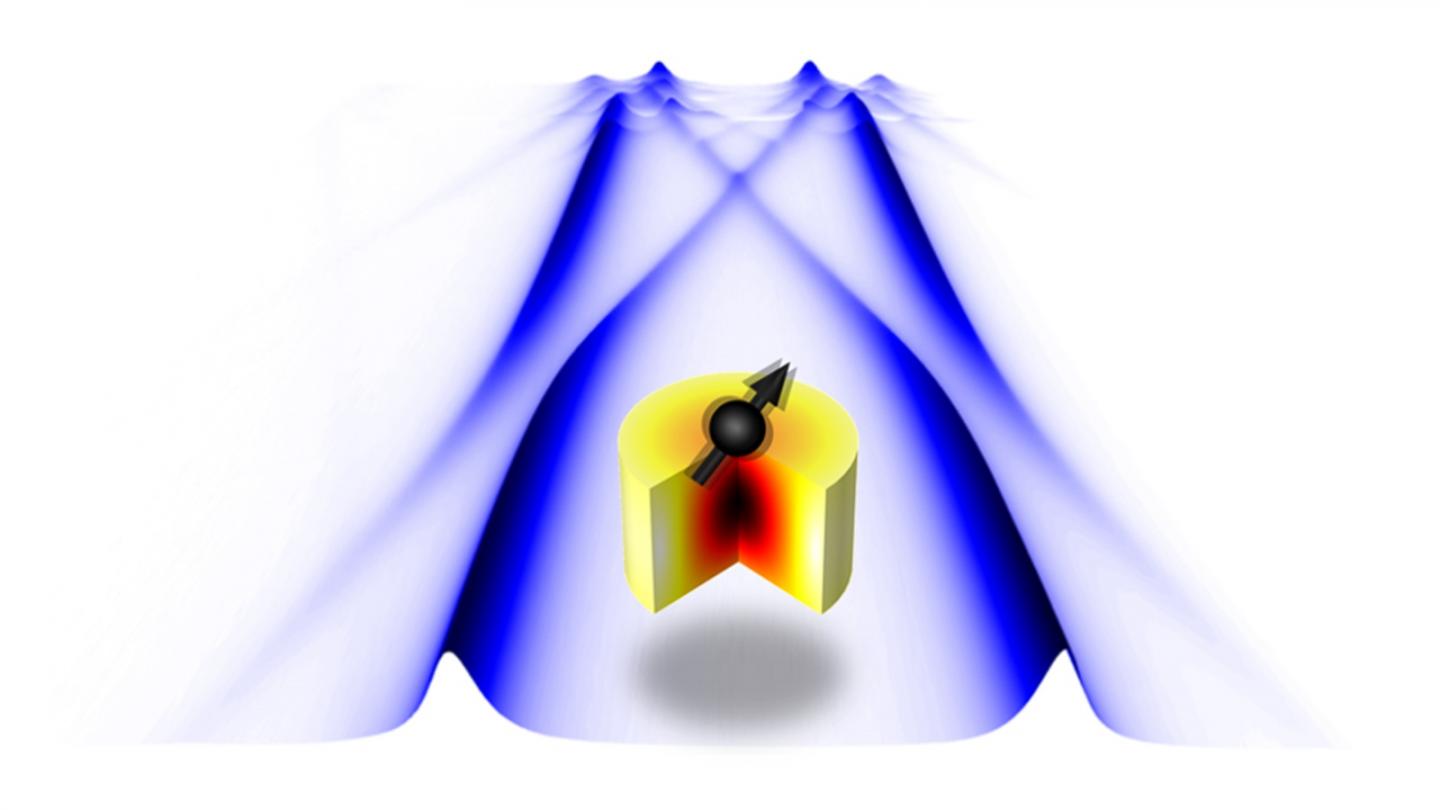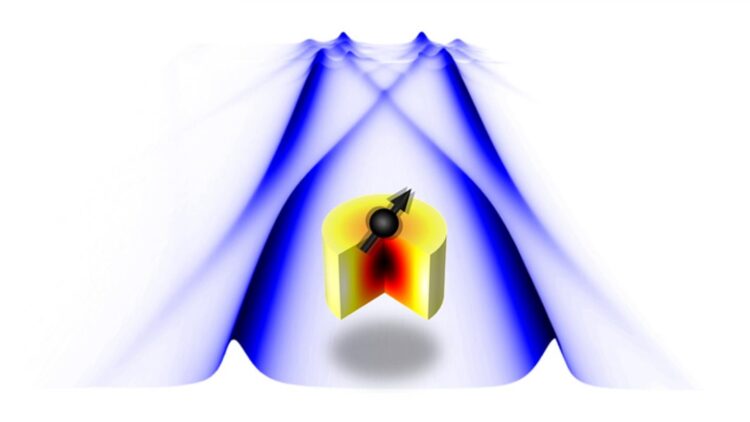
Credit: Argonne National Laboratory.
Scientists tame photon-magnon interaction.
Working with theorists in the University of Chicago’s Pritzker School of Molecular Engineering, researchers in the U.S. Department of Energy’s (DOE) Argonne National Laboratory have achieved a scientific control that is a first of its kind. They demonstrated a novel approach that allows real-time control of the interactions between microwave photons and magnons, potentially leading to advances in electronic devices and quantum signal processing.
Microwave photons are elementary particles forming the electromagnetic waves that we use for wireless communications. On the other hand, magnons are the elementary particles forming what scientists call “spin waves” — wave-like disturbances in an ordered array of microscopic aligned spins that can occur in certain magnetic materials.
“Before our discovery, controlling the photon-magnon interaction was like shooting an arrow into the air. One has no control at all over that arrow once in flight.” — Xufeng Zhang, assistant scientist in Argonne’s Center for Nanoscale Materials
Microwave photon-magnon interaction has emerged in recent years as a promising platform for both classical and quantum information processing. Yet, this interaction had proved impossible to manipulate in real time, until now.
“Before our discovery, controlling the photon-magnon interaction was like shooting an arrow into the air,” said Xufeng Zhang, an assistant scientist in the Center for Nanoscale Materials, a DOE User Facility at Argonne, and the corresponding author of this work. “One has no control at all over that arrow once in flight.”
The team’s discovery has changed that. “Now, it is more like flying a drone, where we can guide and control its flight electronically,” said Zhang.
By smart engineering, the team employs an electrical signal to periodically alter the magnon vibrational frequency and thereby induce effective magnon-photon interaction. The result is a first-ever microwave-magnonic device with on-demand tunability.
The team’s device can control the strength of the photon-magnon interaction at any point as information is being transferred between photons and magnons. It can even completely turn the interaction on and off. With this tuning capability, scientists can process and manipulate information in ways that far surpass present-day hybrid magnonic devices.
“Researchers have been searching for a way to control this interaction for the past few years,” noted Zhang. The team’s discovery opens a new direction for magnon-based signal processing and should lead to electronic devices with new capabilities. It may also enable important applications for quantum signal processing, where microwave-magnonic interactions are being explored as a promising candidate for transferring information between different quantum systems.
###
The DOE Office of Basic Energy Sciences supported this research, which was published in Physical Review Letters. Aside from Zhang, authors include Jing Xu, Changchun Zhong (University of Chicago), Xu Han, Dafei Jin and Liang Jiang (University of Chicago).
About Argonne’s Center for Nanoscale Materials
The Center for Nanoscale Materials is one of the five DOE Nanoscale Science Research Centers, premier national user facilities for interdisciplinary research at the nanoscale supported by the DOE Office of Science. Together the NSRCs comprise a suite of complementary facilities that provide researchers with state-of-the-art capabilities to fabricate, process, characterize and model nanoscale materials, and constitute the largest infrastructure investment of the National Nanotechnology Initiative. The NSRCs are located at DOE‘s Argonne, Brookhaven, Lawrence Berkeley, Oak Ridge, Sandia and Los Alamos National Laboratories. For more information about the DOE NSRCs, please visit https:/
Argonne National Laboratory seeks solutions to pressing national problems in science and technology. The nation’s first national laboratory, Argonne conducts leading-edge basic and applied scientific research in virtually every scientific discipline. Argonne researchers work closely with researchers from hundreds of companies, universities, and federal, state and municipal agencies to help them solve their specific problems, advance America’s scientific leadership and prepare the nation for a better future. With employees from more than 60 nations, Argonne is managed by UChicago Argonne, LLC for the U.S. Department of Energy’s Office of Science.
The U.S. Department of Energy’s Office of Science is the single largest supporter of basic research in the physical sciences in the United States and is working to address some of the most pressing challenges of our time. For more information, visit https:/
Media Contact
Diana Anderson
[email protected]
Original Source
https:/
Related Journal Article
http://dx.






